June 30, 2024
Dear Friends,
Twenty years ago today and a billion miles from here, the Cassini spacecraft came to the end of its seven-year interplanetary journey and flawlessly glided into orbit around the planet Saturn. Flying over Saturn's rings at a swift 25 kilometers per second, we finally arrived. It was momentous!
As one might expect, there was a lot of press activity surrounding this event, and as the leader of the Cassini imaging team, I was tasked with reporting to the world what we saw when we got there. At the bottom of this post is a video clip of my presentation at the press briefing that was held at JPL on the morning of July 1, 2004, after the orbit insertion maneuver was completed …
… and we had successfully imaged the rings as we flew closer to them than we had ever been, returning shocking details that had never before been seen. It was, after all, why we spent all those many years getting to Saturn … to see what hadn’t already been seen and to learn what we didn’t already know.
I had been asked by The Planetary Society (TPS), a space advocacy organization founded in 1980 by Carl Sagan, Bruce Murray, the former director of JPL and one of my favorite Caltech grad school professors, and JPL aeronautics engineer Louis Friedman, to write an article for their bi-monthly publication, the Planetary Report, about Cassini’s entry into Saturn orbit. I’ve decided that instead of writing a new article to commemorate this special anniversary, I would simply post here the Planetary Report article from 20 years ago.
I called it Captain’s Log: 2004.184 and you will see as you read it that I was very much rocked by the magnitude and significance of the moment, and groping to put into words the impressions and feelings left in me by the whole surreal event. Over the years, re-reading this chronicle, which I’ve done many times, has given me great pleasure. It describes an occasion of great historical significance, for sure. But, it also captures a pivotal and triumphant moment in the life of a planetary explorer who had spent her professional career, first in training and then on assignment, learning her trade and working like mad to meet the challenges that lay before her. It is me at my most authentic, deeply affected, contemplative self.
I describe in this piece the discoveries we had made in the month or so before Saturn arrival. We had found 2 small moons orbiting among the inner major moons, and had an extraordinary, mind-blowing close flyby of Phoebe … the largest of Saturn’s irregular satellites. [Saturn’s cloud of irregulars was discussed in my Remembering Cassini - Entering the House of Saturn entry from April 14, 2024.] Phoebe was an unforgettable overture to the great adventure up ahead and made it strikingly clear that our time at Saturn would be spectacular.
We also had been keenly and frequently observing Titan as we approached Saturn, using a filter combination designed to minimize the effects of scattering by the atmosphere and allow views of the surface. By early June, we had turned those observations into a movie that showed the entirety of Titan’s surface.
It was still rather low resolution, in places 55 miles/pixel at best. But we were rapidly closing in on this alien world — the last, single and greatest expanse of unexplored terrain we had remaining in our solar system — and we were hopeful that in time, the secrets that Titan had hitherto held from human view would be revealed. [Pssst … we were not disappointed!]
Not surprisingly, I spent considerable column-inches in the piece describing the elegant, precisely executed features that dominated the startling images we took of Saturn’s rings during orbit insertion. I spent the time allotted to me in the press briefing (below) doing the same. At this stage in my career, my focus was the study of planetary rings. I knew Saturn’s rings intimately and this was that moment when I was seeing them again for the first time in 23 years. It was, for me, a rapturous homecoming.
The essay ends with our first, Voyager-class flyby of Titan about a day after we entered orbit. Though it wasn’t an exquisitely close encounter like the many we would see over the ensuing 13 years, we were already seeing features on the surface that looked like sinuous channels, and wondering out loud if these might be riverbeds or canyons carved by the liquid hydrocarbons that had been predicted to be there. At this point, we didn’t know exactly what was in store for us, but we were growing in confidence that it would turn out to be fantastic.
Today, we all know how the story of Cassini’s time at Saturn turned out.
Twenty years ago, this is how it began.
Captain’s Log: 2004.184
There are times when human language is inadequate, when emotions choke the mind, when the magnitude of events cannot properly be conveyed by the same syllables we use to navigate everyday life. Last night, a balmy and ordinary summer evening in Pasadena, California, was such a time.
In a history-making maneuver so flawless, so perfect it seemed dreamt, one comparatively tiny machine, along with its builders, its operators, its scientists, its well-wishers—indeed, all of humankind—fell into the embrace of giant Saturn, a place that had been a distant destination, in the mind and in the future, for nearly a decade and a half.
After seven years of design and development, Cassini was launched in October of 1997. Its initial years were spent cruising the inner solar system, with flights by Venus and Earth, and then a distant flight by Jupiter in late 2000, just to gather sufficient momentum to place it on its final, southerly approach to Saturn. Even at speeds approaching 6 kilometers (4 miles) per second, Cassini required more than three years to cross the empty abyss between the two giant planets, a distance as great as that separating Jupiter from the Sun. Then, last night, June 30, 2004, following instructions that had been uploaded into its memory two weeks earlier, the craft rose through a wide berth in Saturn’s rings, glided swiftly up and over their northern unilluminated expanse, ignited its counter-thrusting main engine, and quietly took up orbital residence around Saturn. At that moment, Cassini became the farthest robotic outpost humanity had ever established around the Sun, a tiny but glistening newcomer to the skies of the ringed planet. We had arrived.
It was difficult to know what to say, what to feel. Fourteen years of thinking, designing, building, testing, planning, dreaming . . . fourteen years of anxious anticipation . . . had been insufficient to prepare us. Perhaps nothing could.
Not even Phoebe.
Prelude at Phoebe
Phoebe, a moon 220 kilometers (130 miles) wide, plies the outer reaches of Saturn's gravitational influence in a retrograde orbit, a clear indication that this body is an interloper, an intruder to this particular planetary system, captured into orbit probably billions of years ago as Saturn and its moons were forming. We had buzzed this small world only three weeks earlier, coming within 2,000 kilometers (about 1200 miles) of its surface, in a daring flyby that already seemed far away and long ago. At that range, the relative motion between a spacecraft and the surface of a body can be so large that it impedes the acquisition of sharp images. However, Cassini had been designed for such maneuvers: a staggering 53 of them have been planned over the course of its nominal four-year investigation of the Saturnian environment. It had been programmed to pivot while it flies, keeping the sights of the cameras and other remote-sensing scientific instruments staring at a particular point on the surface of a body, despite the rapid movement between the two.
Planning and programming notwithstanding, we can never fully predict what such an encounter will produce. If we could, there would be no point in conducting one.
Ground-based observers had told of the presence of water on Phoebe’s surface, an observation which strongly suggested that Phoebe had its origins not, for example, in the rocky waterless asteroid belt whence the moons of Mars arose, but most likely in the hinterlands of the solar system, out in the dark, cold regions patrolled by Uranus and Neptune.
However, in science, suggestions are one thing; direct, detailed evidence—the kind that speaks a thousand words—is quite another. As is often the case in the study of planetary bodies, what we found at Phoebe was similar in some respects to what had been seen on equivalently sized bodies, making what was different about Phoebe all the more intriguing.
Phoebe's landscape is cratered all over, indicating an ancient surface, one not reprocessed, as on larger moons, by internal mechanisms. This alone was not unusual. Phoebe also was grooved in places, with grooves similar to those seen on the Martian moons, including Phobos. The origin of the grooves on both bodies is a mystery, but their forms suggest cracks in the “bedrock” of the moon, filled in by loose overlying rubble. The closest images, in which details as small as 15 meters can be seen, reveal blocks 50–300 meters across—again, a circumstance similar to that observed on the Moon and asteroids such as Eros.
However, the variations of brightness across Phoebe’s surface were larger than had been seen on a small body, with very bright areas exposed by large landslides and even very small craters. Furthermore, the excavation of some of the larger craters revealed a layering of bright and dark material at the surface. In places, the upper layers were clearly several hundred meters thick. This was unusual. These and other imaging observations (such as a measure of Phoebe’s volume) and readings from other instruments on board Cassini—in particular, the reading of the body’s mass by Doppler tracking of the spacecraft—told of a body rich in ice though probably more rich in rock, with a mean density that could be explained best if Phoebe formed in the outer solar system. Its outer layers were clearly compositionally and spatially variable, and its surface was coated in a very thin, dark blanket of something. The Visual and Infrared Mapping Spectrometer, capable of discerning composition, found that “something” to be, in places, partly organic, also suggestive of an origin in the outer solar system.
We concluded, as Phoebe receded behind us, that we had just paid visit to an ancient, primitive relic of the early solar system, one member of the population that formed Uranus and Neptune and a cousin to the dark bodies inhabiting the outer reaches of the solar system beyond Pluto, the famed Kuiper belt. If that conclusion is correct, we had just stared a Kuiper belt object look-alike in the eye. In our first historic episode at Saturn, we had just put a face to a name. Not bad for a prelude.
The Moons at Saturn
The superiority of our cameras over anything previously carried to Saturn would lead to other findings, both surprising and beautiful.
Even prior to Phoebe, we imaged the Saturn atmosphere and rings with exacting deliberation to search for temporal variations. We made distant approach observations of Titan and the other known moons. We searched for new moons that had escaped detection from the Earth and from Voyager. If Cassini did not make it into orbit, these data collected on approach would be all that we could show for years worth of effort and funding; our tour of the Saturnian system would devolve to a flyby. Deciding which images to take and which to leave out was a serious matter.
Our search for new moons was particularly gratifying. We looked among the main Saturnian moons, searched just outside the rings, and peered within the rings themselves, especially within the vacant gaps, where we surmised they would be lurking. In doing so, we uncovered, once again, Atlas and Pan—two small bodies, about 32 and 20 kilometers (20 and 12 miles) across, respectively,—orbiting just outside and just inside the main rings. These moons had not been seen by human eyes since the days of Voyager.
After a good deal of analysis of images taken in early June, we eventually discovered two very small objects, only several kilometers across—S/2004 S 1 and S/2004 S 2—between the orbits of Mimas and Enceladus. They had skipped around Saturn, presumably for billions of years, unnoticed until now. How lovely it was to know that our efforts to coax previously unseen bodies into view were successful and that our legacy would now include the discovery of new real estate within the Saturn system.
These small bodies should have been broken apart easily by the great number of small, icy comets (only about 30 meters, or 100 feet, across) believed to have originated in the Kuiper belt and to have rained down on the bodies throughout the outer solar system over the course of billions of years. The very existence of these two bodies tells us either that the flux of the small comets is not as large as previously assumed or perhaps that our new finds have had a violent history of multiple cycles of collisional disruption, re-accretion, followed again by collisional breakup and re-accretion. The answer to this riddle will be sought in images we hope to collect of the surfaces of moons such as Enceladus. These images should record, and therefore provide measure of, the flux of small comets within the Saturnian system.
Viewing Saturn’s Rings
A week after the Phoebe flyby, the planet’s rings appeared to our cameras as if painted in watercolor, with subtle shades of salmon, blue, gray, and brown. They are predominantly water ice, and their colors presumably reflect varying degrees and kinds of contamination by non-water components. …
Future color imaging of the rings, along with data collected by the spectrometers on board Cassini, will readily tell us the composition of the rings and its variation across them. Disentangling the composition of the original ring progenitors—those bodies whose disruption and subsequent dispersal created the rings in the first place—from the composition of the tons of meteoritic material that daily falls onto them will be a more difficult challenge.
Finally, on June 30, we found ourselves flying over the rings at a swift 25 kilometers (15 miles) per second. We were closer to Saturn and closer to the rings now than we had ever been or ever would be again during the Cassini tour, and maybe even during our lifetimes. This was an opportunity that could not be missed, and mission scientists had been clamoring for years to be permitted to utilize it to full advantage.
The speed of the spacecraft and the minute-long shoot-and-readout image acquisition cycle meant that consecutive images, one taken immediately after the other, did not overlap in their coverage of the rings: they were separated by about 1,000 kilometers (600 miles), several times the size of one field of view. We were not going to be able to make a complete scan of the rings. It would be hit and miss, but no one cared. Whatever we got would be the best we would ever get, and we were eager for it.
The ringscape, enormous and almost supernaturally flat, spread out beneath us; we were riveted by what we saw. For the 24 years since Voyager 1’s first passage by Saturn, I have carried around in my mind the geography of Saturn’s rings. Their structure, their shape, and their behavior have been my profession and my life. Now, I looked upon familiar sights with unfamiliar clarity and saw something wholly new. I found myself almost without words to describe and explain.
Forty-three images, with spatial resolution some 25 times greater than we had seen with Voyager, were taken while the spacecraft sped in darkness over the rings, starting in the C ring, covering the inner B ring, and then beginning again at the outer B ring, continuing over the Cassini division and the A ring until we were once again staring down at empty space. We had chosen the shortest possible exposure time—5 milliseconds—to avoid any chance of smearing the images. After descending through the plane of the rings again and emerging onto the illuminated side, 18 more images—9 narrow angle and 9 wide angle images—were taken, from the F ring inward, terminating just interior to the Encke gap. These had a level of detail several times coarser than the dark side views but still five times as good as anything we had obtained with Voyager and comparable to the closest images we will take of the rings during the remainder of our tour. They were spectacular.
It was immediately evident, upon inspection of these 61 images, that we had discovered a collection of phenomena never seen before, and some not even predicted.
We saw features without any sensible order at the limit of resolution in one dark side image. In other images, we saw very narrow ringlets standing apart from broader bands carved up in a profusion of seemingly incoherent structure. But mostly, we saw waves, and more waves.
These are the handiwork of orbiting Saturnian moons which perturb the orbits of ring particles at the sites of gravitational resonances and force the particles into spiral patterns. Where the ring particles are perturbed into eccentric orbits, we found a density wave in which the enhanced concentration of particles takes the form of a spiral pattern wrapped around the planet, as in the three waves in image above and the lower left hand wave in the image below. Where the orbits are forced to be inclined by the action of an inclined moon, we found a bending wave, where the warp in the ring plane takes the form of a spiral pattern, wrapped round and round the planet, as in the right hand wave in the image below. This latter structure is akin to a traditional wave created by a pebble thrown into a pond, only the crests are spiral and not circular.
Waves are precise but curious structures, and we don’t have completely satisfactory explanations for why they look the way they do. Theories stumbled years ago, when sufficiently accurate data were lacking to guide them. Now, back at Saturn, we have collected a bounty of information we didn’t have before, a circumstance that surely will advance the study of wave formation and propagation. We can expect deeper insights into the behavior of icy particles arrayed into the giant sheet that is Saturn’s rings, and even into the behavior of icy particles that ultimately coalesced to form the outer planets billions of years ago. Saturn’s rings are our closest analog to the great flattened structures we see throughout the cosmos: from the disks of material, being discovered as we speak, surrounding protostars in our galaxy in which planets are forming even today, to the vast pinwheels of stars and gas we call the spiral galaxies. The scientific reach of Cassini and the investigations we hope to conduct with it are truly universal.
Our most artful image is surely one of the F ring, in which periodic drape-like scallops are carved by the action of Prometheus in the delicate, diaphanous material interior to the ring. But the image that kills at a thousand paces is our dayside view of the Encke Gap, 300-kilometer (180-mile) division in the outer A ring kept open by the perturbations of Pan, the gap’s only known inhabitant.
In this one image (above), we come face to face with the order and mathematical precision of countless icy particles influenced simultaneously by Saturn, Pan, and each other. The effects of Pan on the inner edge of the gap are particularly stunning and regular: scallops in the edge caused by the periodic and precisely phased in-and-out motion of many small orbiting bodies acting in unison; white streamers, marking the enhanced concentration of these bodies resulting from this phased motion, that spiral away from the edge and fade as they go; and ringlets within the gap, kept narrow by Pan’s shepherding action. What a feast!
Last night, the world applauded us. We were exhausted and relieved. But our work had only begun. Titan loomed up ahead.
Imaging Titan
We are now thirty hours passed the rings and we are staring down Titan, making our first Voyager-class flyby in the Saturn system. This is the telling event. The hazy Titan atmosphere had prevented the Voyager cameras, which could only `see’ at the visible wavelengths of light, from penetrating to the surface. However, ground-based observers had learned to see the Titan surface by looking in specific and narrow spectral regions in the near infrared, where the transparency of the atmosphere actually begins to increase in the `windows’ between those spectral regions where Titanian methane is absorbing. We had this `peering through the window’ trick in mind in outfitting the Cassini cameras, ensuring that they had the proper, narrow near-infrared filters, as well as haze-reducing polarizers, needed to see to the surface. But how far would this go? We were fairly confident we could see the large-scale, 300-kilometer (180-mile) features seen by the ground observers and that we would have greater visibility of these structures, whatever they might be. But would we be able to see features as fine as the cameras and closest approach distances of the more than 40 Titan flybys could serve up—in some cases, a few tens of meters per pixel? Even in the first Titan flyby, the image scale would be 2 kilometers (1 mile) per pixel. Would we see such detail?
Available models of the Titan atmosphere covered the full range of possibilities between two extremes: on one hand, the total abundance of haze is large, in which case we would do no better than seeing features about 100 kilometers (60 miles) in size, or the total haze abundance is modest, like a smoggy Los Angeles day, in which case we might see the finest features, assuming they exist (and are of sufficiently high contrast) in the first place.
Surface contrast observed through an atmosphere will be reduced by the scattering of light from the air-borne haze, and the amount of scattering, and therefore the reduction in observed contrast, depends on the abundance of overlying haze and its vertical distribution. Thus, features on the surface with greater contrast have greater chance of being seen by a spacecraft cruising overhead.
What we see on Titan certainly lacks the clarity of the Phoebe and Saturn ring images, but is perfectly within the range of expectations. Between light and dark regions, we see nebulous boundaries so diffuse that we all find ourselves fighting the impression that we are looking at clouds and low-lying fog.
But we are not: many of the features seen in the south polar region looked similar in their light and dark variations and boundaries to the motionless, presumably surface features seen in the mid-latitude regions, first by ground-based observers and now by us.
One feature immediately grabs all of us—an obvious cloud complex hovering near the south pole and as big as the state of Arizona. In a series of images, taken one after the other, we can see the evolution of its structure. It is likely to be a cloud field, similar to that seen with much less detail by ground-based Titan observers. Its study over the Saturn orbital tour should provide us with a sensitive probe into the thermal inertia of the Titan surface and convective character of the atmosphere.
With a bit of work, we can also make out a few sinuous features, only 10 kilometers (6 miles) wide. It is seductive to imagine riverbeds and streams or deep canyons and channels, features perhaps caused by the rain of liquid methane and ethane that Titan theorists have long predicted. At this stage, however, there is no further evidence to develop this line of imagining into fact. Scientists pride themselves on their discipline and restraint. And so we remain restrained, unsure of what we are observing, awaiting future opportunities to view Titan in greater detail and with greater coverage, and awaiting the results of the investigations of Titan by other Cassini instruments, before offering any conclusions about the character of the markings we have seen on its surface.
However, one thing we can readily offer is the hope that greater detail will be available to us if indeed it exists on the surface at all. The putative visibility limit of 100 kilometers (60 miles) for a large-haze-abundance scenario clearly does not apply to Titan. If we see features 10 kilometers (6 miles) across with a 2-kilometer image scale, then we should be able to see features 100 meters across with the 20-meter image scale that we will have on future Titan flybys. That assumes again, of course, that such features exist. Thus, our first flyby of Titan leaves us more excited than ever that our investigations of Titan over the next four years will bear the fruit that we have come to enjoy. We may yet learn what this deeply mystifying body has kept hidden for so long. It’s only a matter of time.
And time we have. We are now in orbit around Saturn. Like Phoebe, we have come to dwell permanently in the house of this great patriarch of a planet. Now, it is we who are the interlopers … looking, probing, gathering, reading, measuring … silently, methodically, without disturbance. Now, it is we who are the new Saturnians.
Carolyn Porco is the Cassini Imaging Team leader and the director of the Cassini Imaging Central Laboratory for Operations (CICLOPS) within the Space Science Institute in Boulder, Colorado. She is the creator/editor of the CICLOPS website (ciclops.org) where Cassini images are posted, and writes the site's home page opening greeting to the public. July 1, 2004 … The morning-after press briefing at JPL in Pasadena, CA to report the scientific findings … on the planet’s magnetosphere and its rings … obtained on approach to, and immediately after, orbit insertion around Saturn. From left to right: Ed Weiler, NASA Associate Administrator for Space Science; Bob Mitchell, JPL Cassini Project Manager; Carolyn Porco, Imaging Team Leader; Tom Krimigis, Principal Investigator, Magnetospheric Imaging Instrument, and Bill Kurth, Deputy Principal Investigator, Radio and Plasma Wave Science Instrument. (Video clip by JPL.)

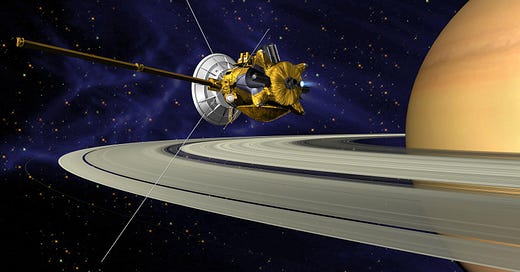


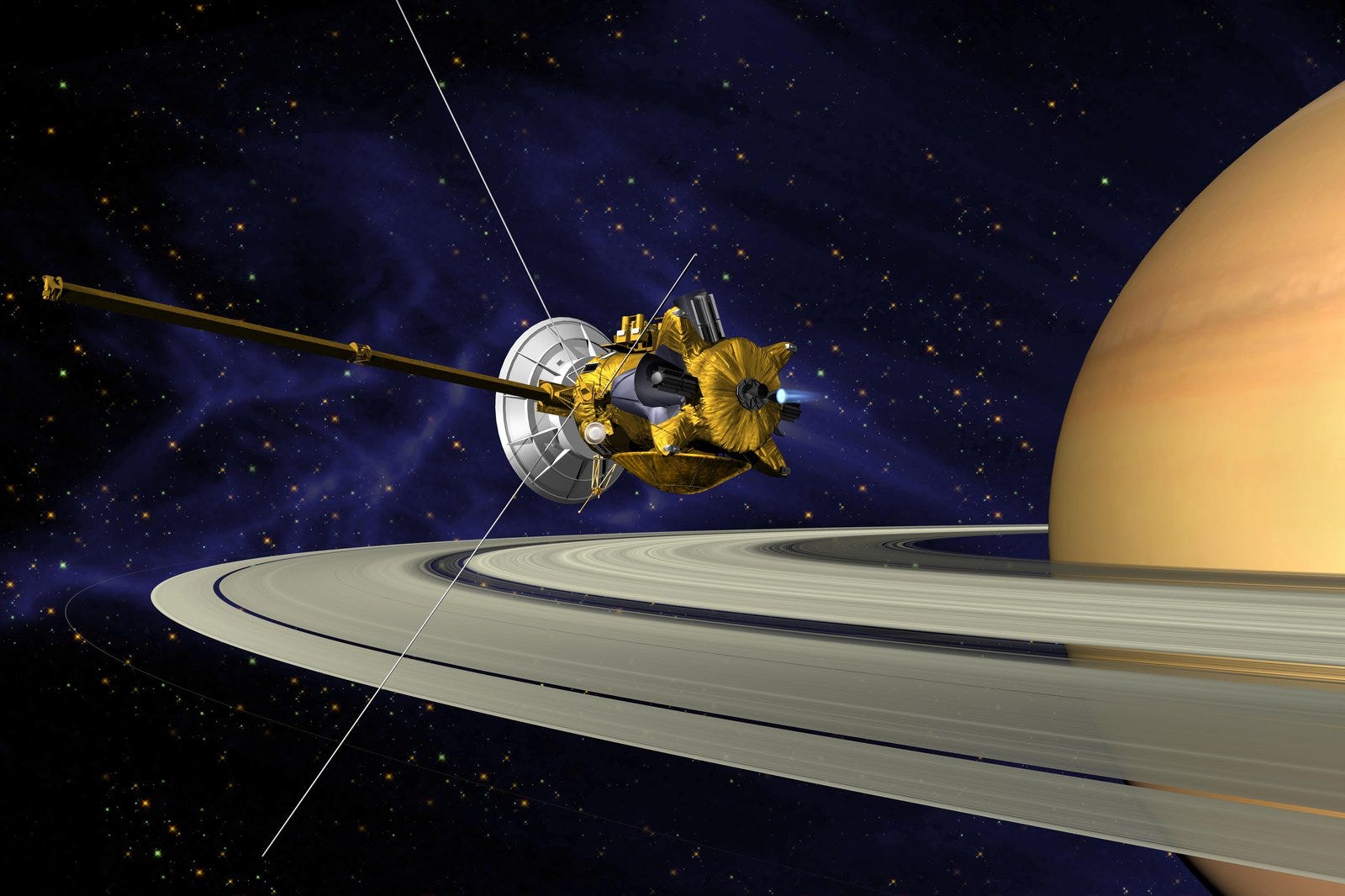
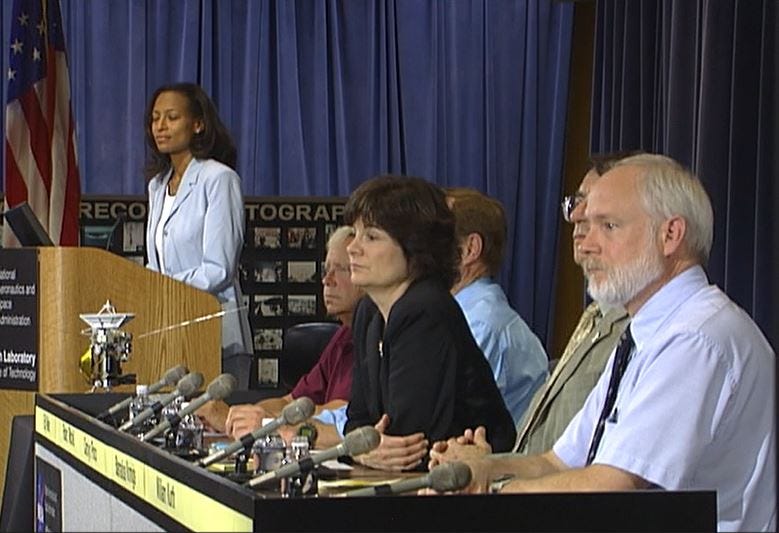

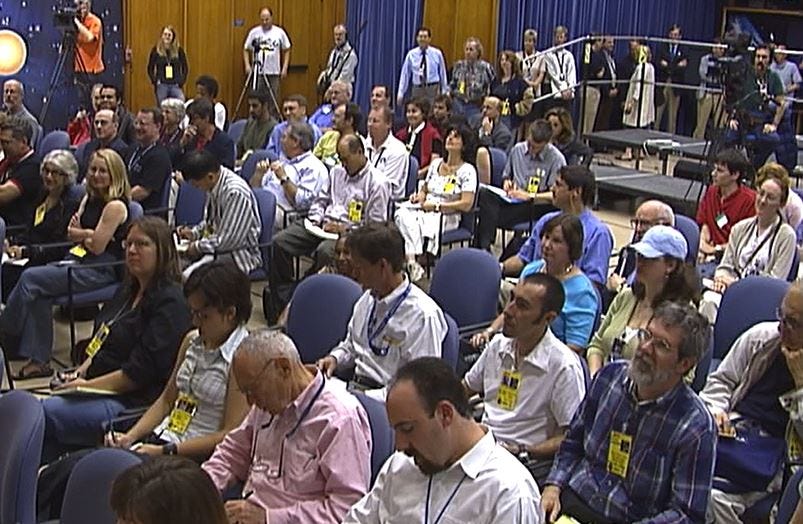
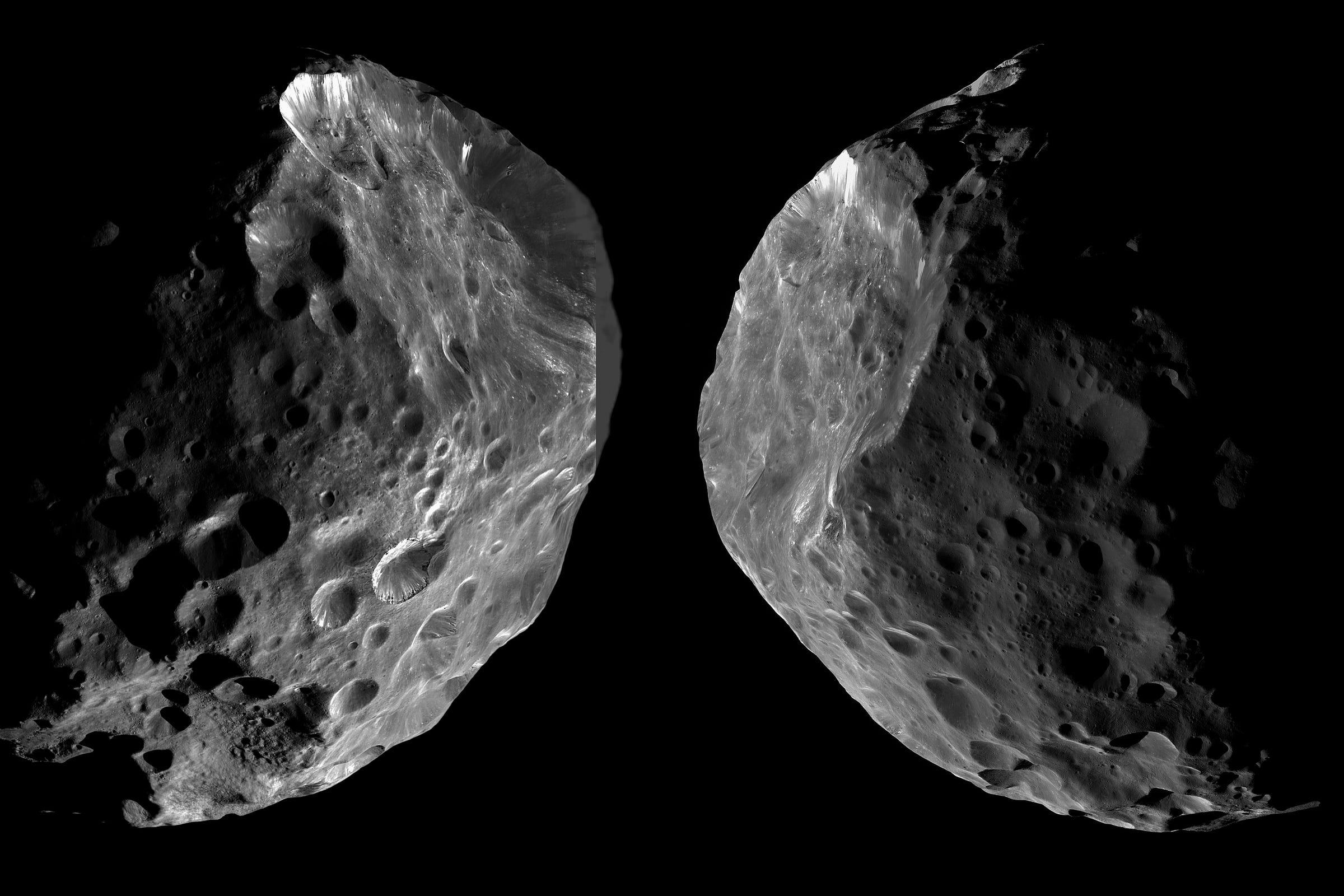
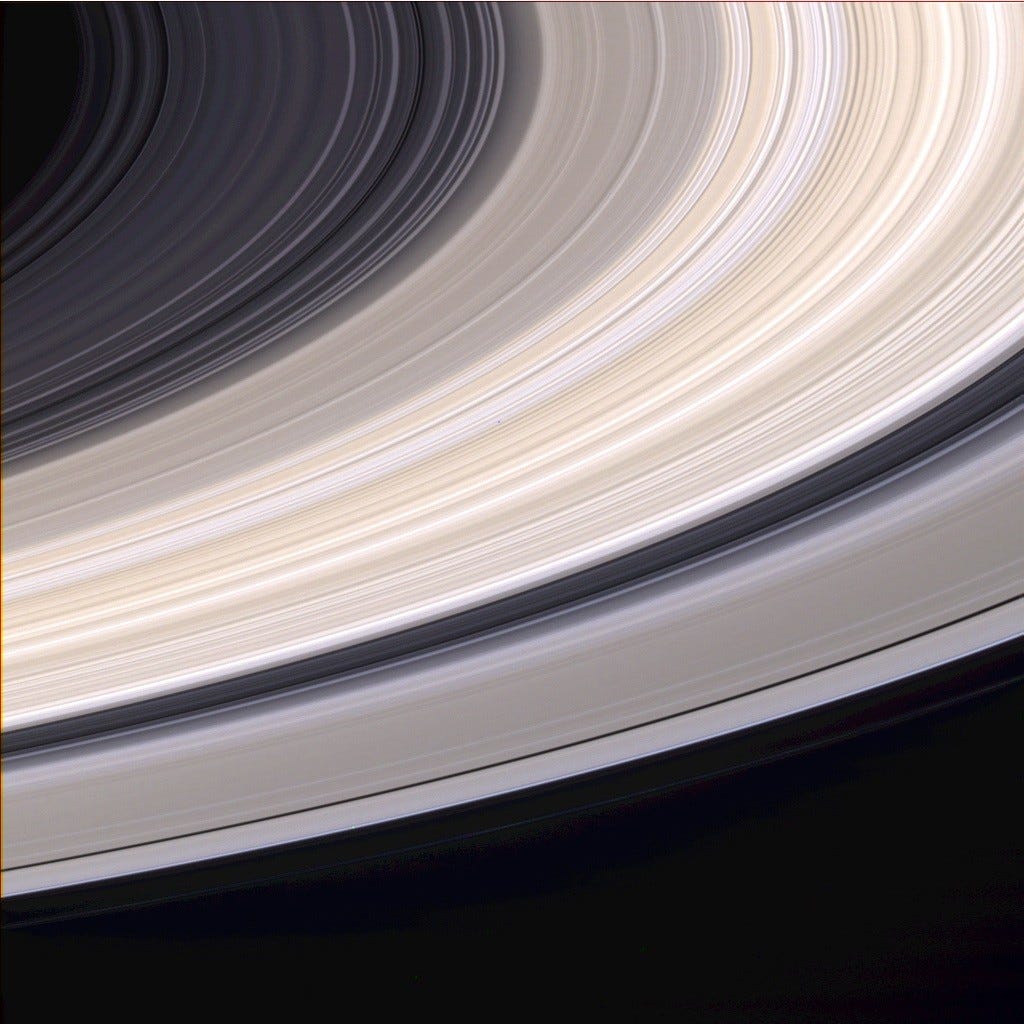
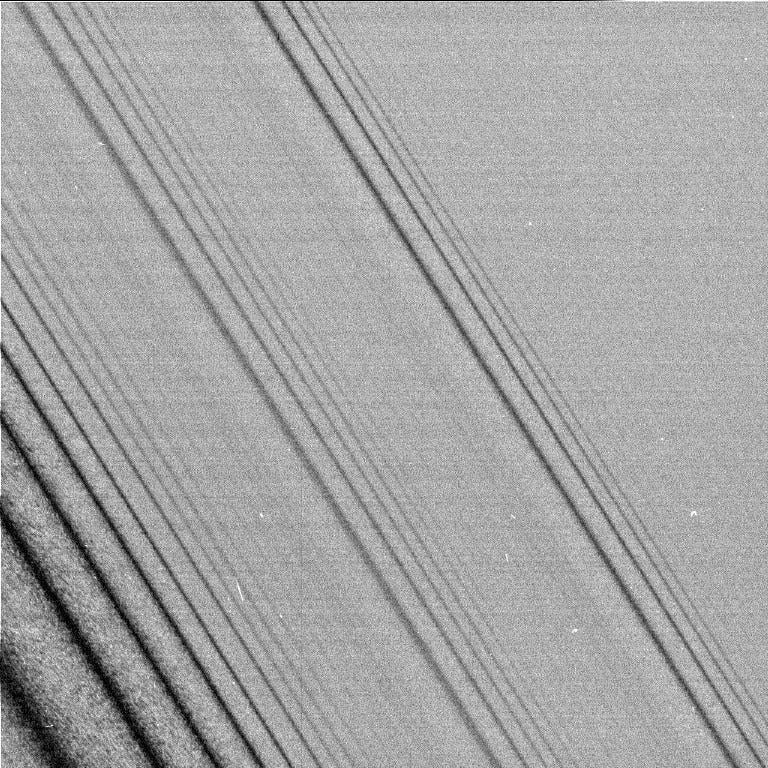
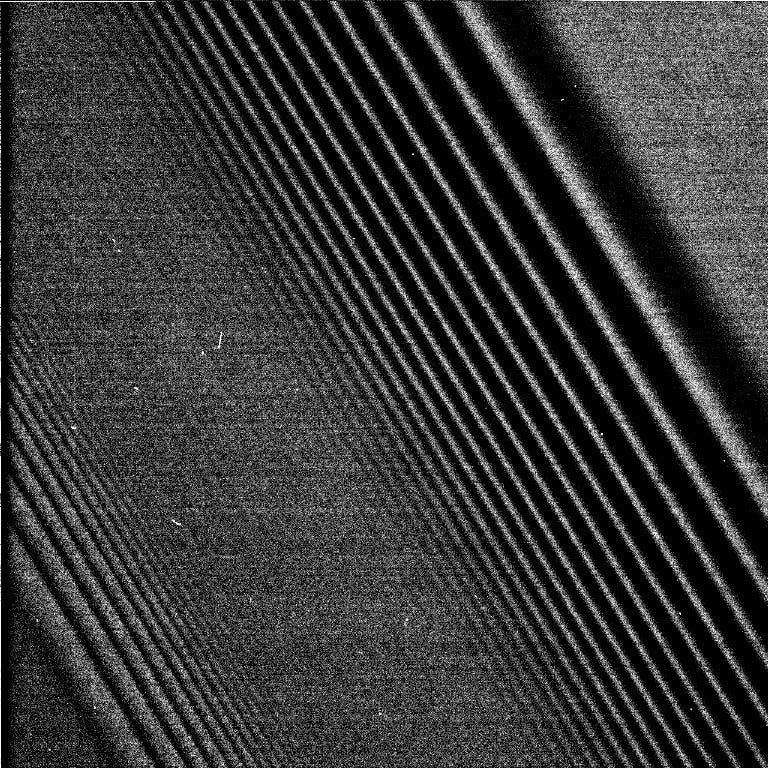
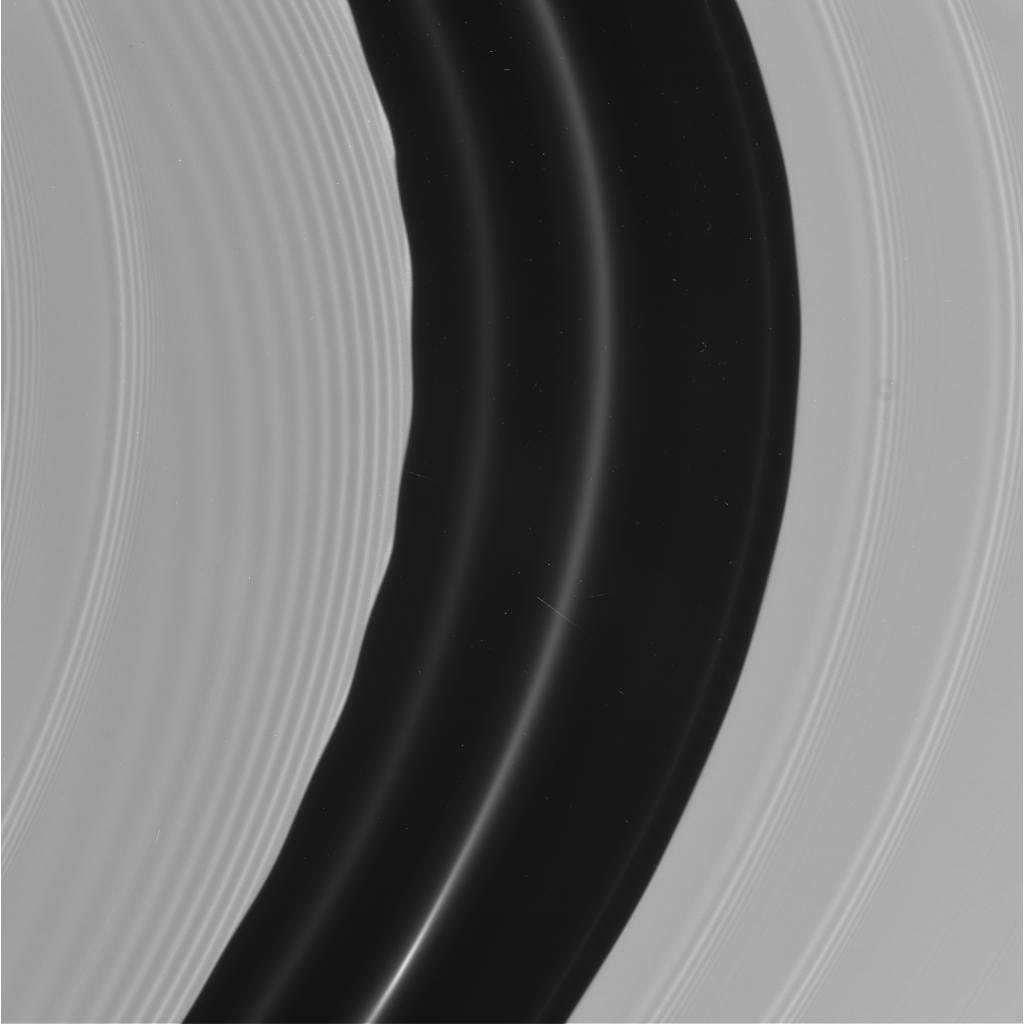
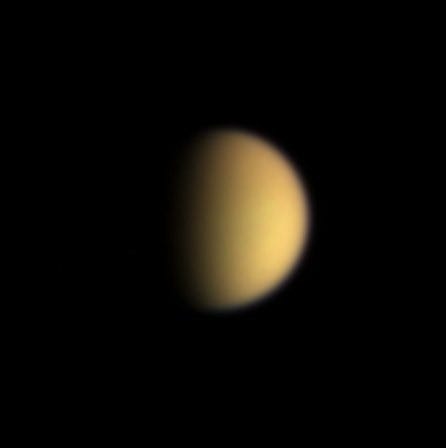

I was a big fan of Karl Sagan, and more so of yours. His theories inspired many such as you to venture on to great things, and wonderous explorations. I sent you both fan letters, and no one since. My astrology tells me that my 'something or other' is in the house of Saturn. Science tells me it's a fascinating place to study, moons and all. All the best in any future ventures. I know they will be exciting.
Hi Carolyn,
Thanks - I've been a fan of yours since Cassini, but I only just found out about your very interesting site! And my good friend Nick Howes never stops singing your praises as well.
Regarding the 1966 Triple Ring Plane crossing, what I remember most was being able to see the unilluminated side of the rings quite distinctly, on 15 May, 18 May, 20 May, 30 May and 1 June.
Conjunction had been on 10 March, so it was still quite close to the Sun at the time of first observation.
I could never see the whole of the rings - just the inner part, probably because some of the illumination of the dark side was simply reflected Saturn light, which would obviously be brighter closer in. And sometimes one ansa was distinctly visible for a greater length than the other.
Also, as the ring plane approached passage through the Sun on June 15.8, the visible length of the dark side ansae gradually decreased. On the first view, on 15 May, I could see the ansae out to almost one Saturn radius, but on my last view on 1 June, they were just little stubs, about 1/5 radius long.
My next observation, on 26 June, when Sun and Earth were once again on the same side of the rings, I could see the full length of the rings, but as an incredibly thin fine line - a beautiful sight! I would really have loved to see what was visible on the date of the actual ring plane passage though the Sun, but unfortunately, no clear sky at that time.
BTW, I was observing from Armagh in Northern Ireland, which explains the paucity of observations - we just didn't have enough clear nights! And it was only visible in the wee small hours - my observation times for those dates are listed as: 03.55 - 04.10; 03.10 - 03.50; 03.05 - 03.50; 02.55 - 03.15; 02.35 - 03.40; and 02.00 - 02.30.
But it was well worth the sleep disruption!
And unfortunately the next ring plane crossing on March 23 occurs too soon after conjunction on March 12 to observe at all!
I've just tried to observe the lunar occultation of Saturn earlier this evening - but totally defeated by cloud!
Thanks again for all your great research, and your superb outreach.
Terry